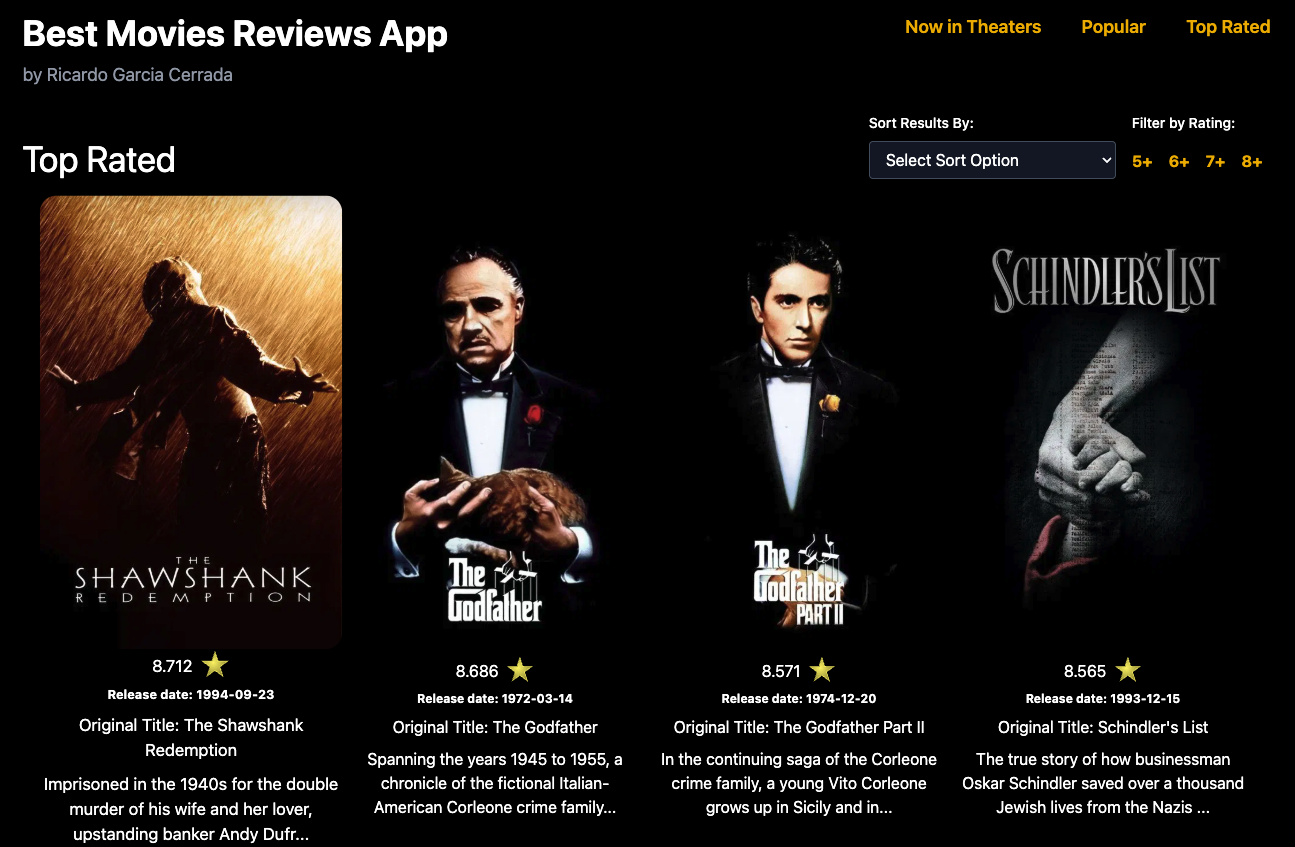The Movie Database
Best Movies Reviews
A sleek and modern web app to display API call to The Movie Database.

Best Movies Reviews Web App Screenshot
Project Overview
This project is a sleek and modern web application designed to display movie reviews from The Movie Database (TMDB) API. The application features a user-friendly interface, dynamic movie reviews, and a responsive design, making it easy for users to explore and read about their favorite films.
The project was built using React for the frontend and Vite for the build tool, ensuring a fast and efficient development process. It also incorporates best practices in software development, including version control with Git and deployment on Azure.
As the sole creator, I was responsible for all aspects of the project, from initial concept and design to development, deployment, and maintenance.